We like to think of our home as our castle, a secure and private place where we can escape from the world. And although we can't all build moats around our homes, we can employ plants to enclose and screen our private worlds. Unlike architectural structures, plants also contribute color, texture, fragrance and movement that change with the seasons and help us mark time and appreciate nature's rhythms.
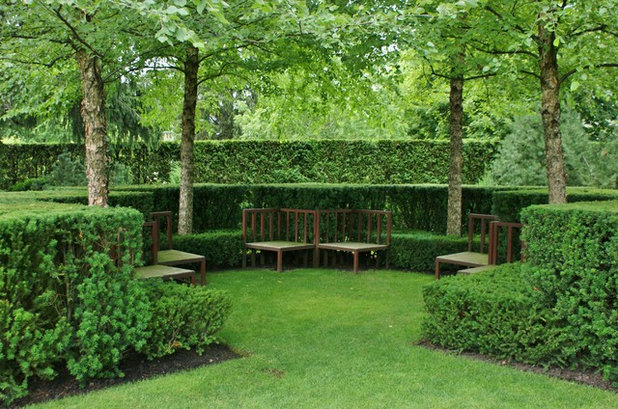
www.KarlGercens.com
Shrubs maintained as a clipped hedge, as shown here, are a literal interpretation of walls or fences and create a formal feel. Select plants with a dense branching structure; boxwood (
Buxus spp),
yew (
Taxus spp) and
privet (
Ligustrum spp) are traditional favorites, but I've also seen stunning hedges of
quince (
Chaenomeles spp).
Formal hedges will need to be sheared annually — or even more often — to maintain their crisp shape. A plant with an ultimate mature size that is similar to that of your desired hedge will be easier to maintain in the long run. It's important for the health of your plants to trim them into a wedge shape, with the base slightly wider than the top.
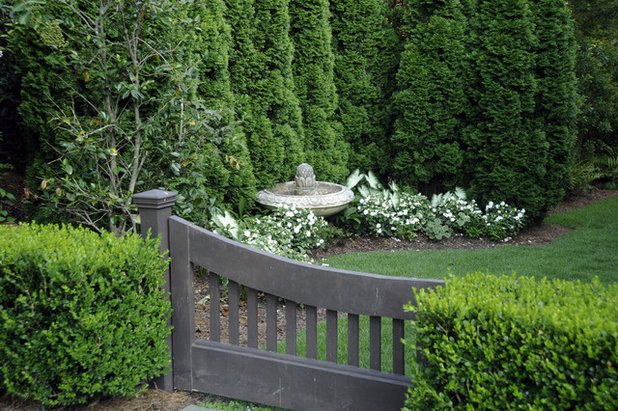
Troy Rhone Garden Design
Narrow evergreens with thick foliage, such as the
arborvitae (
Thuja spp) in this photograph, upright
junipers (
Juniperus spp) and columnar
blue spruce (
Picea pungens 'Iseli Fastigiate') need little pruning and provide a year-round screen that is much taller than most building codes will permit for structures.
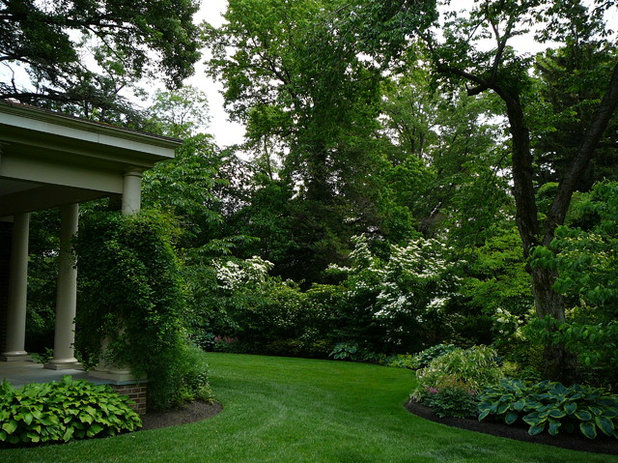
Wallace Landscape Associates
The mixed border of evergreen and deciduous trees, tall shrubs and perennials shown here is a less-formal look that provides more visual diversity. If you enjoy gardening, desire a wide range of seasonal interest or want to attract wildlife, this is the look for you. A fairly large footprint is necessary — think planting beds 8 to 24 feet deep — to achieve this look.
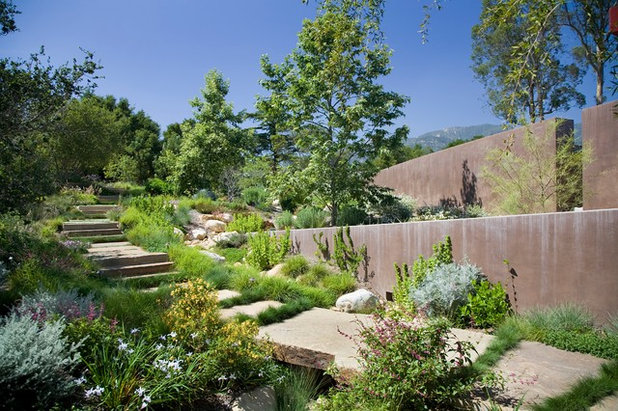
Neumann Mendro Andrulaitis Architects LLP
Sometimes an entire perimeter "wall" of foliage is not necessary. Placing screening plants in strategic locations can create privacy where it's needed while maintaining the view, sunlight and air circulation.
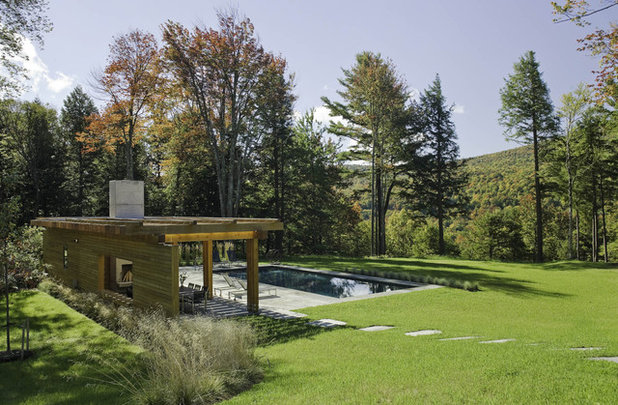
Wagner Hodgson
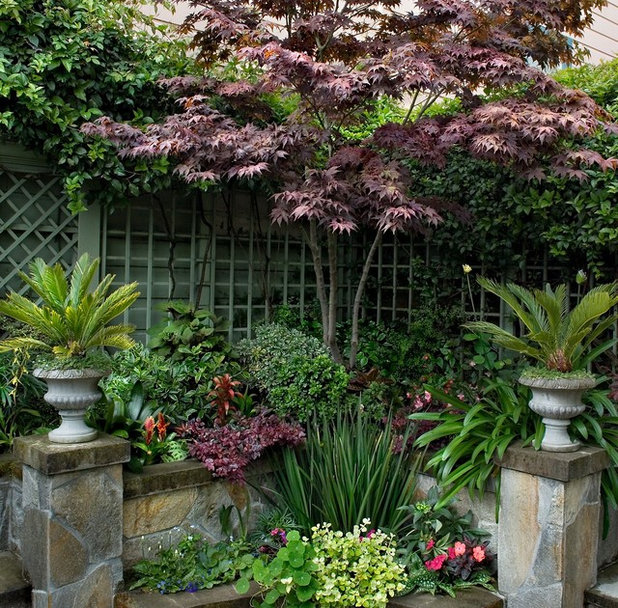
Terra Rubina
On a smaller scale, plants can work in conjunction with fences or walls to expand their height. This may be done with small, ornamental trees or large shrubs. Place them as needed for screening small spaces. Japanese maple (
Acer palmatum, zones 5 to 8, shown here)
serviceberry (
Amelanchier spp),
cornelian cherry (
Cornus mas, zones 5 to 8),
lilac (
Syringa spp) and
viburnum are a few candidates for this application.
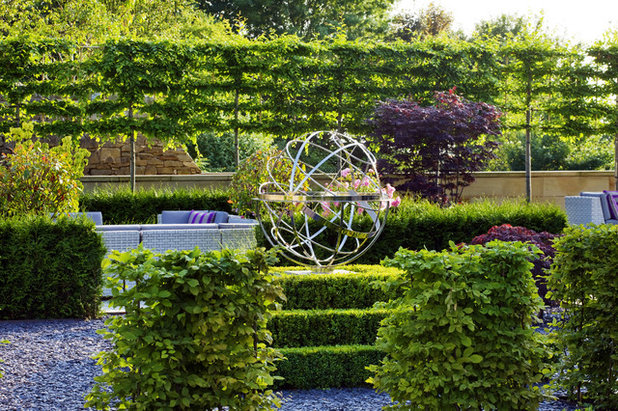
David Harber
Looking for something with a more mod vibe? A row of small trees dramatically pruned into a flat espalier is a clever and dramatic way to top a wall or fence when space is at a premium.
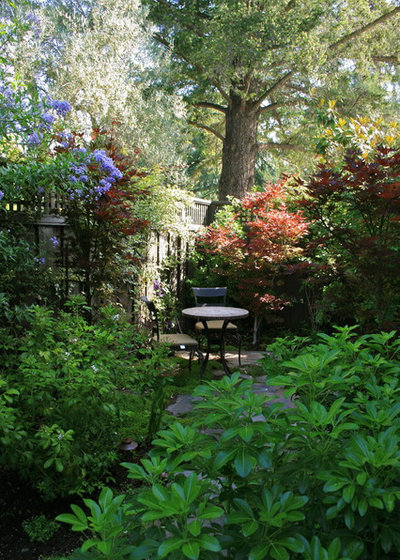
Mozaic Landscapes
Consider, too, that the quickest and most efficient way to achieve privacy is to place a screen in immediate proximity to where it is needed. Screening, as in this example, is the key to creating a cozy, intimate destination patio like this one. Shrubs or ornamental grasses 4 to 6 feet high may be perfect for this purpose.
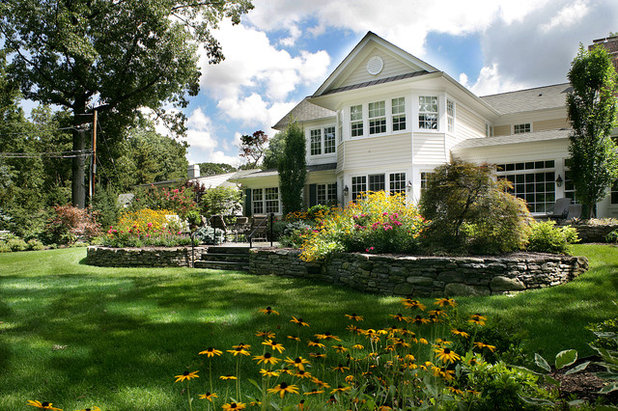
Landscape Techniques Inc.
This larger patio space is lightly enclosed and screened by a soft planting of shrubs and perennials. (Ornamental grasses would have worked well here, too.) This strategically placed garden provides a second, and more immediate, layer of privacy in conjunction with the yard's perimeter plantings. This layering technique is a great way to jump-start your privacy plan if you're just starting to develop your landscape.
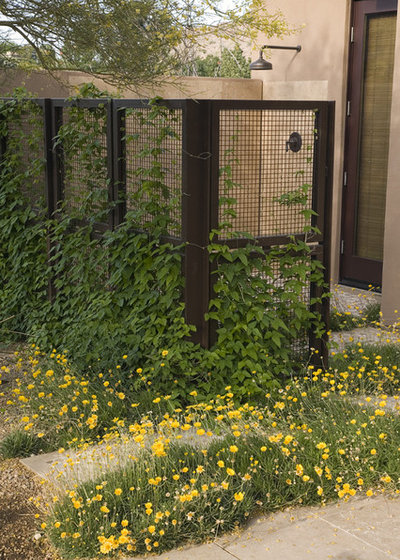
Carson Poetzl, Inc.
Last, but not least, a small space may best be screened by a combination of a structure and plants. Grid-like fences (or sturdy trellises) and vines can be used in very tight spaces to provide plenty of privacy without sacrificing the delights of the garden. Fast-climbing, twining vines like
clematis,
honeysuckle (
Lonicera spp) and
akebia can provide flowers or fragrance, too.
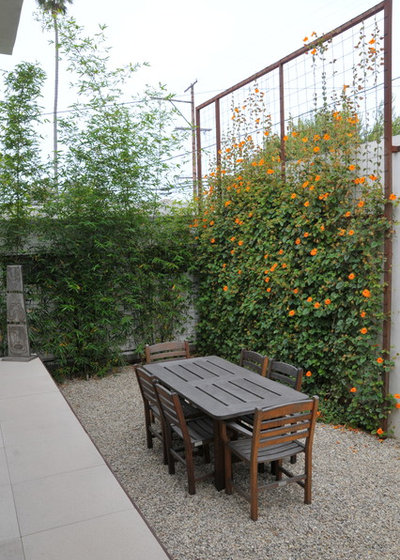
SB Garden Design
As always, apply these design concepts to suit your taste and space, and use plants that grow well in your region.
More: Great shrubs for the landscape
Great design trees
Regional garden guides
Landscape architects and designers near you





